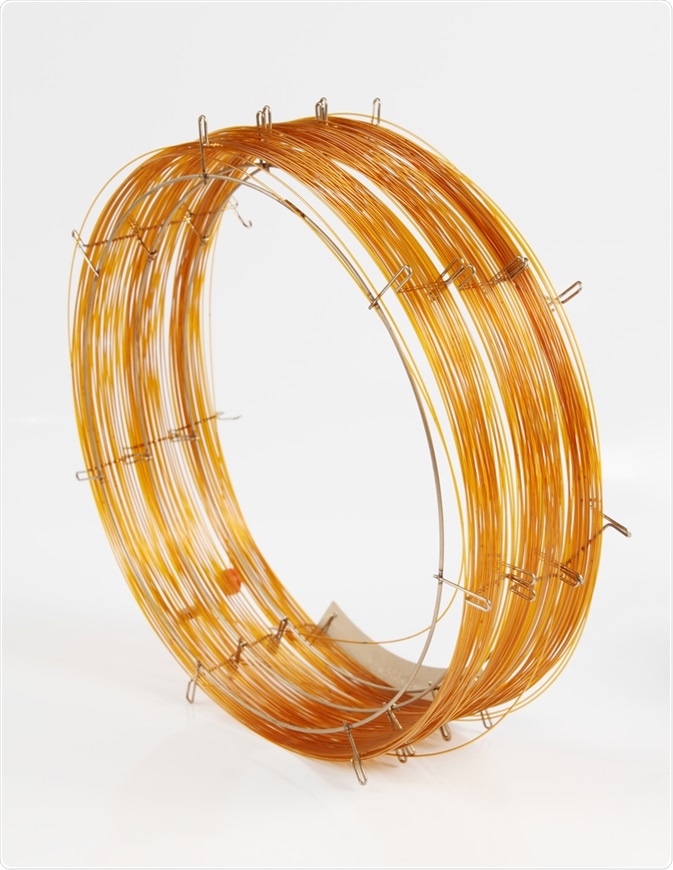
Capillary GC/MS is an analytical technique used to identify individual chemical compounds within a sample. This technique is commonly used in forensics, where drug abuse is suspected. In capillary gas chromatography, the columns include a stationary phase that coats the inner surface of the column, instead of being packed in the cavity.
This article provides a basic overview of the components of capillary gas chromatography-mass spectrometry (capillary GC/MS).
Skip to:
How does capillary gas chromatography work?
The analyte species are first separated in the gas chromatography column after which they enter the mass spectrometer. In the mass spectrometer, the analyte is ionized, mass filtered, and then detected. The outlet of the column is connected to the ion source of the mass spectrometer.
The analyte needs to fulfill the following conditions:
- The analyte should not undergo condensation in the interface,
- The sample should not decompose before entering the mass spectrometer,
- The load of the gas that enters the ion source should be within the limits of the pumping capacity of the mass spectrometer.
The importance of column diameter
The diameter of capillary columns must be selected to balance two factors: efficacy and sample capacity. There is often a trade-off between these two factors. The common internal diameter of capillary gas chromatography columns are below 0.32 mm, and the rate of the flow does not require a ‘separator' type interface.
In cases where the flow rate does not exceed 2 mL/min, direct interfaces can be used. Also, higher flow rate requires the use of devices that concentrate vapor, such as Bieman concentrator or jet separator devices. When the flow rates rise above 2 mL/min, the two-stage vacuum has in maintaining the vacuum levels, and the filament also has reduced lifetimes in cases when the vacuum is compromised.
Jet separator
Jet separator interfaces are used in case of columns that are packed or those that bear capillary columns with high flow rates. Here the carrier gas is removed preferentially compared to the analyte, leading to the enrichment of the analyte.
Coupling of Gas Chromatography to Mass Spectrometry
Different strategies have been used to couple gas chromatography to the detectors of mass spectrometry. Gas chromatography produces a high volume of carrier gas that when introduced into the ion source of the mass spectrometer can compromise the vacuum. This can reduce the efficiency of the ionization process and shorten the lifetime of the filaments that are used to produce the electrons.
Vacuum system (mass spectrometry)
The process of mass spectrometry needs to be carried out at very low pressures (~10-8 atm). Issues relating to pressure occur when gas chromatography is interfaced with mass spectrometry detectors, as the carrier gas flow rates are such that they cannot be pumped away using the normal vacuum pumps. However, the carrier flow rate is 25–30 times less and can be easily pumped down.
Choosing the Capillary Gas Chromatography Column Stationary Phase
The stationary phase determines the selectivity or the ability of a column to separate the components of a sample. In this phase, the film is either chemically bonded or coated on the inner wall of a capillary column.
The chemical and physical properties of the organic compounds that are injected and the interaction with the stationary phase form the basis of separation. The analyte with the strongest analyte-phase reaction is retained for a longer time compared to the other.
Film Thickness
The usual film thickness ranges from 0.25–0.50 μm. This optical thickness may vary based on the application. Decreasing the thickness may lead to sharper peaks and increased resolution while increasing the film thickness can lead to an increase in the sample capacity and analyte-tube interaction.
Further Reading
Last Updated: Feb 23, 2023